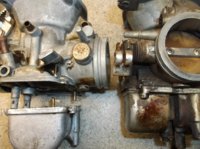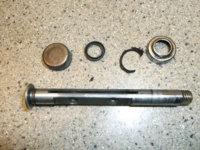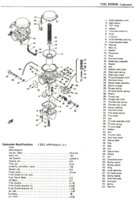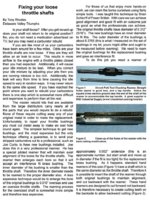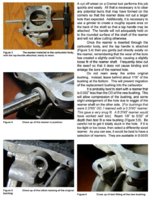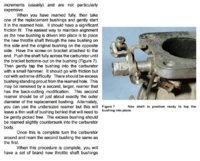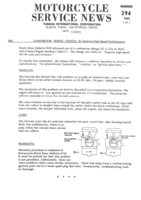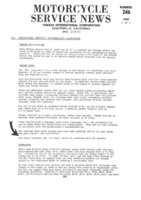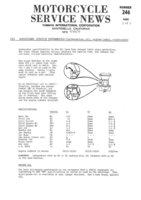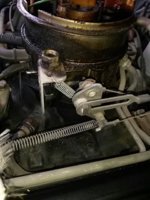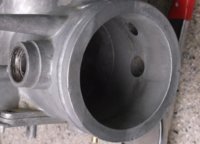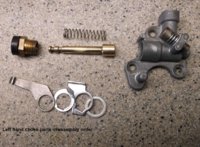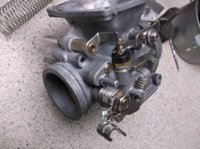2many you have me thinking.
Oh, dear, I'm terribly sorry ..................................... April Fool's !!!
Could we plate the shaft bores and then ream them? Caswells sell swab plating kits.
Haha, I like the idea, but plating to
aluminum Zamak is a touchy area.
Is the carb body aluminum or die cast?
Cast
aluminum Zamak, unknown alloy. Those were the early transition years when Japanese manufacturing and metalurgy were improving from post-war recovery. Possibly melted-down soda cans.?.?...
My thought is to build up the bore with say brass plating, ream it using a centering bushing and a back cut reamer like above, refit shaft with new seals, done?
There's one good bearing surface in there that would be a good guide for the oversize reamer shank, the unworn bottom/rearward surface. The idea would be to do the oversize ream while gently pressing the reamer shaft against this reference surface, so the oversize hole would remain concentric to the original bore. If the bore were plated, that surface is gone, and a jig would probably be needed to guide the reamer.
It would be wonderful if you could simply put a drop of some self-wicking babbet-type wear-tolerant bearing restorer in there. Something that would bond to the
aluminum Zamak, but not to the shaft (or slightly oversized reference pin). But that doesn't exist yet?
My cigarette making machine has a rectangular piston with a tough teflon coating on one side. Wonder how they did that...
This would be my hope. These bodies will probably work as is but the wear can be felt on the cable arm side, they aren't ideal and I have at least three more sets of early carbs to do.
Yeah, my mind drifts back to the '70s technology, using things with which I'm familiar, like reamers and replacable bushings. Still trying to catch-up on modern chemistries, methodologies, industrial processes.
Only 3 sets? You know, it breaks my heart to think of how many otherwise good carb bodies have been tossed just because of worn throttle bores. It would be great to be able to save them from the trash heap.
Pic #1 - Here's my country-bumkin shadetree fix for a worn throttle body in my '90 Blazer. The short spring in the middle of the pic holds the throttle shaft to the unworn side of the throttlebore, upwards and forward, pulling up and away from the throttle cable tension. The throttle shaft simply pivots in the spring's curved hook end. This is a throttle body injection system, looks like a carb, but doesn't have fuel orifices around the butterfly valves. So this bandaid doesn't affect idle mixture. It just keeps the butterfly plate from grabbing/sticking in the throttle bore.
Looking through caswells maybe copper?
I had friends in the polishing and chrome-plate industry back then. They did some jobs for me, including triple-plate chrome on aluminum, a disputable practice. Had to do the copper first since the nickle and chrome wouldn't bond reliably to the aluminum. But, the copper/aluminum bond is tedious as well, since long-term life is at risk of the bimetallic corrosion that occurs at the aluminum/copper interface.
But things have changed over the years, maybe there's new chemistries in that kit that would make this as simple as painting. Worth investigating and trying.
Just want to avoid any chance of debonding and risk a stuck throttle...
The parts count in these early carb chokes is through the roof. After a two week layoff reassembly is driving me nuts, good thing I had other (still assembled) sets to look at.
Pics #2, #3 - In case you don't have them, here's more to add to your collection, XS1 carb changes, MSN 246, pgs 1-2
Pic #4 - More info on the E1 to E3 carb change, MSN 294
